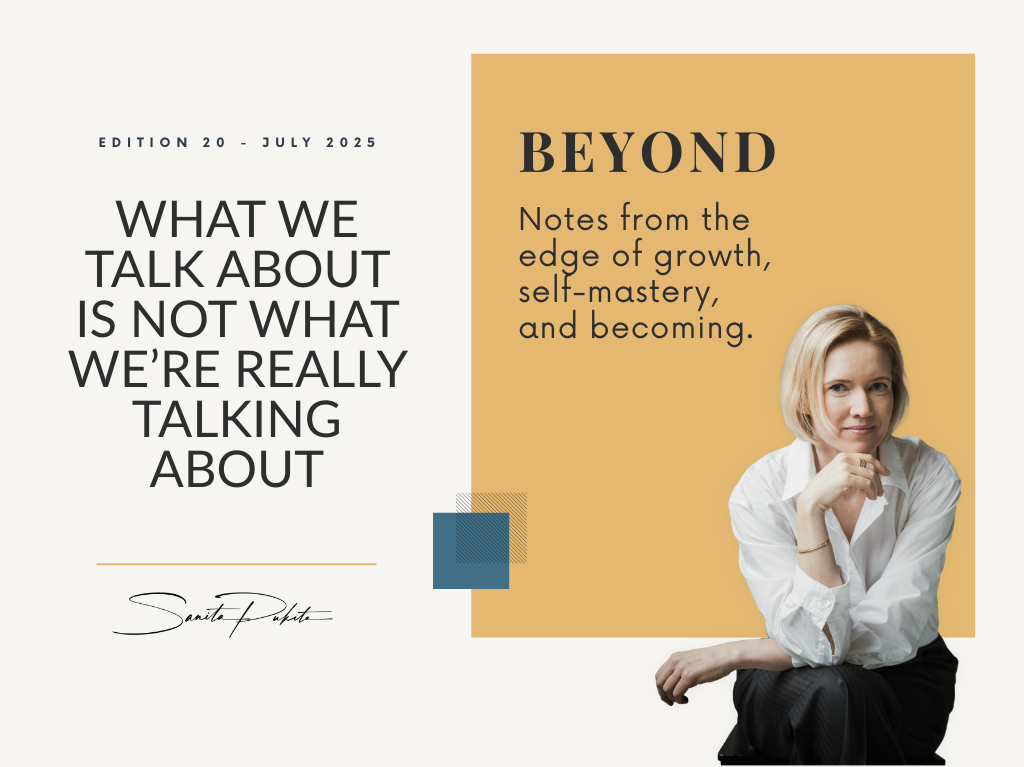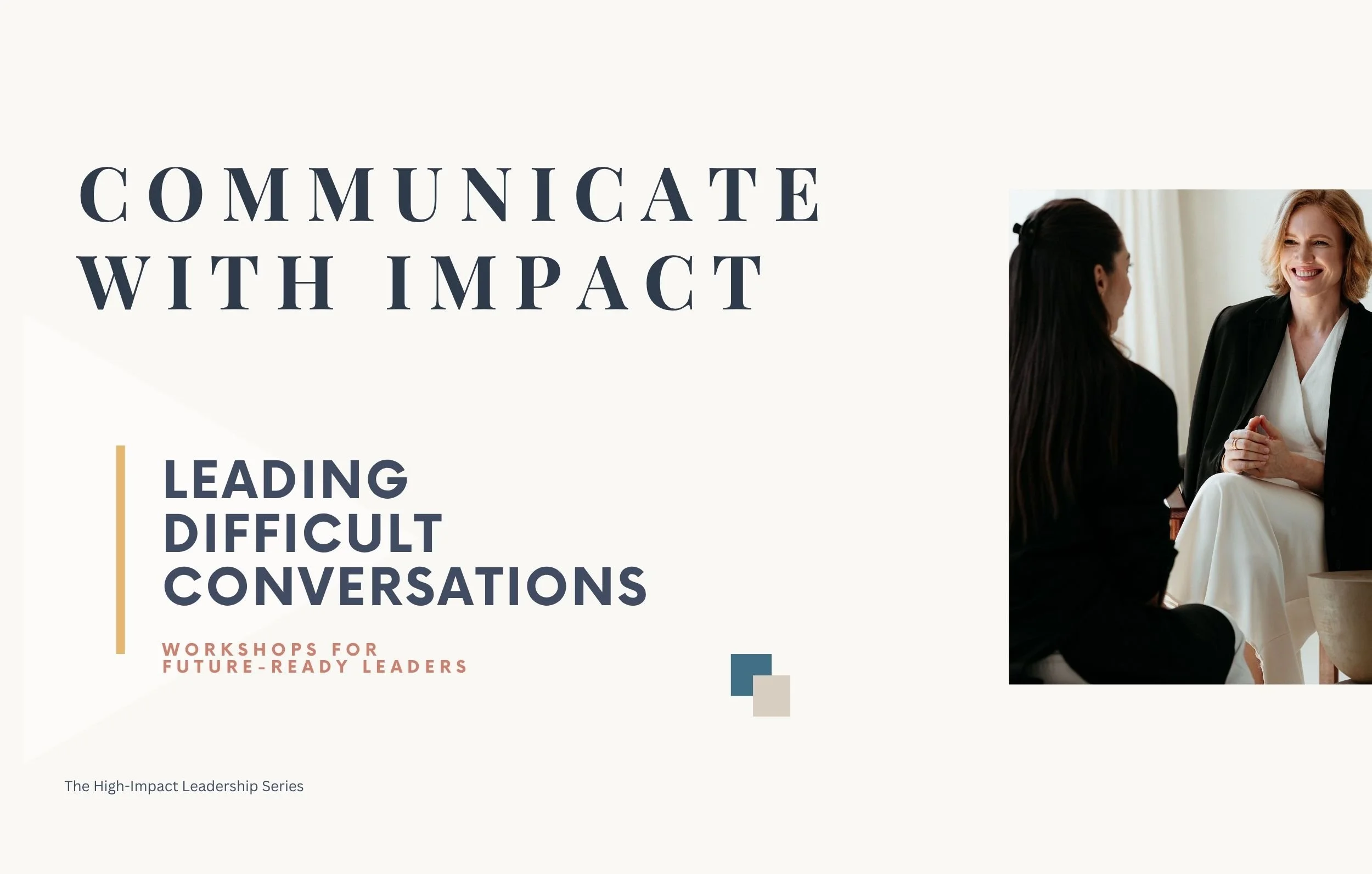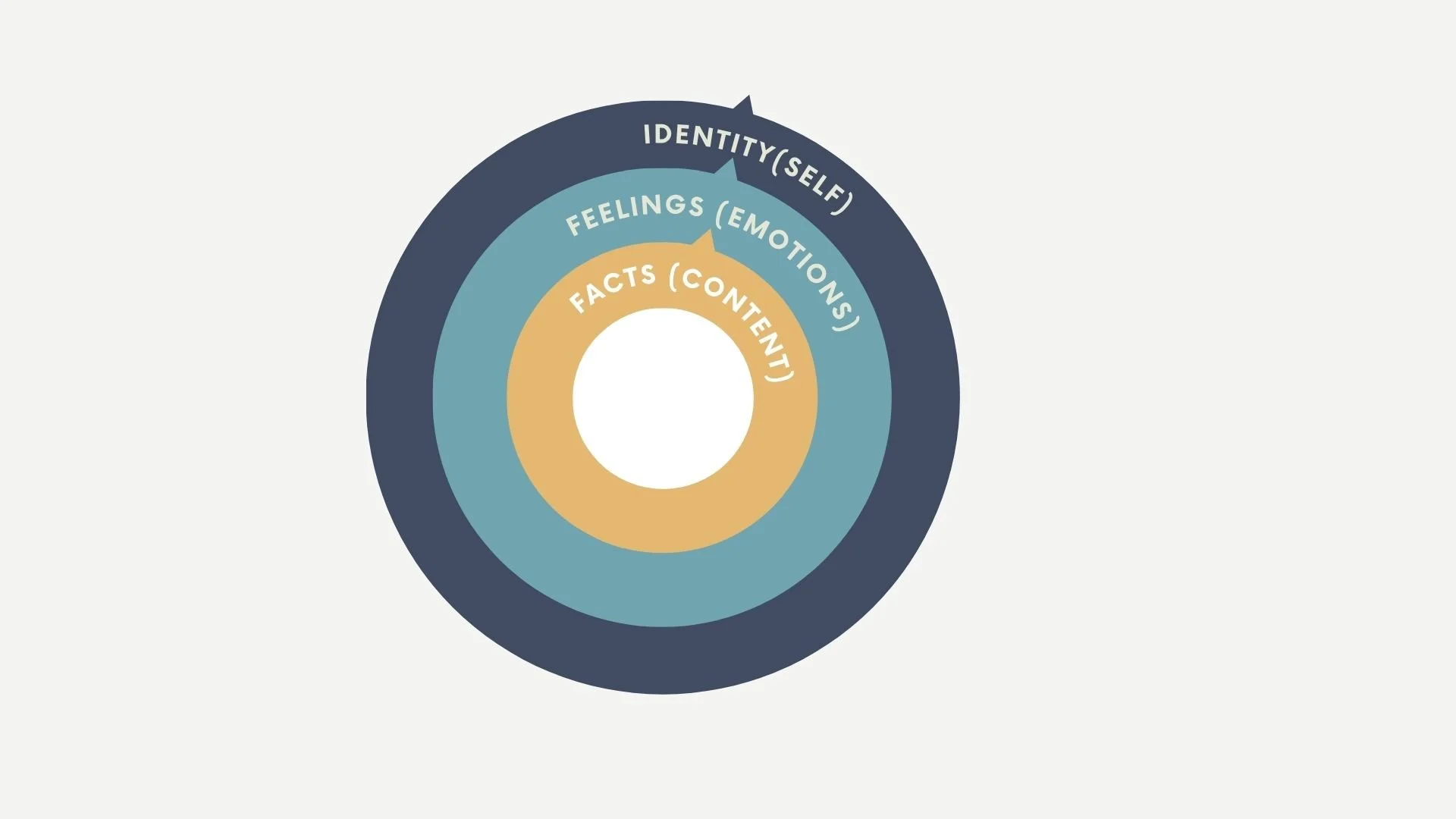What We Talk About Is Not What We’re Really Talking About
Newsletter in Brief:
This issue explores the link between inner strength, courageous conversations and real influence.
Community workshop to reset your 2025 goals.
Leading challenging conversations - tips and frameworks.
Build your CustomGPT to reshape education.
This is a bi-weekly newsletter that shares strategies and actionable steps for self-mastery, leadership and my personal reflections and professional updates. Subscribe here!
What’s holding you back?
Sometimes, we’re our own biggest obstacle. Last two month, I’ve been in diverse environments - running leadership communication workshops, climbing life’s inner and outer summits, and watching leaders face the one thing that terrifies them most: a real conversation.
Not the scripted kind. The vulnerable kind. The kind that changes things. And almost always, the block isn’t out there. It’s in here. Let’s talk about that.
The Conversation We’ve Been Avoiding
Influence is often misunderstood. By definition, it’s the ability to shift someone’s beliefs, attitudes, or behaviors - through the presence or action of others.
In simpler terms: influence is our capacity to shift how someone thinks, feels, or acts.
But here’s the twist: when we avoid hard conversations, we also avoid our ability to influence. Why? Because we can’t shift someone’s actions if we won’t even start the conversation.
In one of my recent workshops, I asked: “What’s one conversation you’ve been avoiding for too long?” Silence. Not confusion. Recognition.
We often know what we’re avoiding. Other times, it lingers just at the edge of awareness or a quiet tension we tiptoe around. So I asked the room a different question: “Where do you draw your greatest strength from?”
The answers were immediate: Family. Work. Purpose. Community. Faith. Then I asked:“What if you lost that?” Not to provoke fear, but to uncover truth.
Our greatest sources of strength are often our deepest vulnerabilities.
And the conversations we avoid often live right there, in the places we’re afraid to disturb.
Let’s look at real example
“I did not want to crush her”, one leader shared. He had a team member quietly underperforming for months. Not dramatically, but just enough to impact the group.
He kept adjusting around her. Avoided the 1:1. Told himself it wasn’t the right time. But under that was fear: fear of self-worth, of confrontation, of making things worse. Eventually, it started affecting the whole team.
So he used a framework from our session and had the conversation. It didn’t start perfectly. But it ended in more clarity, more connection, and started a shift. “Once we aired it out, it wasn’t nearly as dramatic as I imagined.” he said.
This is the heart of Inside-Out Influence™.
In the book Difficult Conversations, authors Douglas Stone, Bruce Patton, and Sheila Heen speak about 3 layers of conversations. Their suggestion is to move away from thinking of these conversations as ‘difficult’ and start seeing them as ‘learning’ ones. Let's unpack them. Link to the book.
1. The Facts - "What Happened?" Conversation
While the conversation is about facts, what we are really dealing with here are perceptions.
How each person sees the situation
What each person assumes about the intentions about the other person
Who is to blame for what happened
Key reframe: Perception taking.
In the recent ‘Dynamic Teaming’ Harvard Business School course I took, Leadership Advisor Per Hugander spoke about a framework he developed to help teams collaborate more effectively, called Jazz Dialogues.
The key to a great Jazz Dialogue is twofold:
1. Gain clear agreement on the future state the team is working toward.
2. Shift from judgment to curiosity, taking the time to understand each party’s perspective and contribution.
When teams begin to master this approach and integrate it into their daily work, conversations naturally shift - from blame and assumptions to curiosity and collaboration.
2. The Feelings Conversation
This is the emotional undercurrent - what people are really feeling but may not be expressing.
What we’re dealing with at this level are emotions that rarely get named, but they drive the conversation. Especially in professional settings, we’ve been taught to suppress our emotions. And we've learned to do it well. But the truth is, they still show up - subtly, unspoken, yet powerful.
Emotions like hurt, guilt, and anger often sit just beneath the surface, shaping tone, tension, and trust.
Key reframe: Owning and naming the emotion.
First, naming what we feel helps clarify the conversation and often, it unlocks it. It also signals ownership of our emotions, rather than unconsciously shifting into blame. For example, instead of saying, “You’re being dismissive,” try saying, “I feel dismissed.”
Watch how the entire dynamic shifts, making space for dialogue instead of defensiveness.
3. The Identity Conversation
This is the internal dialogue, what the conversation means to your or the other parties sense of self. Key questions that come up here, but are never surfaced deal with our worth.
Am I competent?
Am I a good person?
Am I worthy of respect?
Difficult conversations often trigger deep identity fears. They also push us very quickly into polarity thinking (read more about it in my Linkedin article). The conversation turns into all-or-nothing thinking. Simple mistake can be taken as ‘I am not competent leader’ or simple suggestion turns into ‘I am not worthy of my role’.
Key reframe: Embrace the skill of holding paradox
When we learn to hold paradox and embrace and/and thinking we are able to hold a more nuanced view of ourselves, such as “ I can be a great leader AND still make a mistake”.
Three levels of difficult conversations model, adapted from the book “Difficult Conversations” by Douglas Stone, Bruce Patton, and Sheila Heen.
Why we avoid these conversations?
Here’s what happens psychologically: We don’t avoid the person. We avoid the imagined consequences.
What if I say it wrong?
What if it changes the relationship?
What if I lose control?
So we stay in motion. We keep “doing.” But activity ≠ clarity. And time doesn’t heal what’s never acknowledged.
In psychodynamic terms, these are defense mechanisms:
We suppress.
We rationalize.
We protect our curated self-image.
But most of the heaviness we carry? It’s from what we never say.
The Strength - Shadow Scan™
Start small. Use this as a self-mastery tool:
Strength Source: Where do I draw strength or power from?
Avoided Conversation: What conversation am I avoiding?
Shadow Layer: What fear is driving that avoidance?
Tiny Step: What’s one honest sentence I could say - to myself or someone else to begin?
You don’t have to fix it all.
You just have to start.
Self -regulation: what happens next?
Once you’ve named what you’re avoiding, the next challenge is staying grounded enough to move through it. This is where self-regulation becomes your superpower.
Think of it like this: A strong oak tree doesn’t resist the wind, it flexes and holds.
To lead through discomfort, we need the same:
Awareness of our emotional state
Agency to choose how we respond
Capacity to stay connected, even when it’s uncomfortable
Psychologist Dr. Wallen offers a 3-step guide:
Name it – “I’m scared. I’m anxious.”
Claim agency – “I can choose how I show up.”
Reflect – “What’s one thing I can do to steady myself right now?”
That shift, from spiraling into reaction to standing in grounded response - changes everything.
Final Thoughts
We all carry unsaid things and conversations that only take place in our heads.
But what we avoid doesn’t disappear. It becomes a pattern. When we step in - gently, honestly, imperfectly - we don’t just shift the conversation. We shift the system around us.
Courage is contagious.
And clarity removes the unwelcomed pebbles from the path.
Even when we don't resolve it all. Tiny step - is a beginning.
CustomGPTs for education.
I have been looking into using AI for training and education purposes. A recent email from Harvard Faculty Lounge caught my attention - building our custom GPT to reshape how we support learning. If you are looking to create one yourself, here is the article on how to do so.
How to create and use CustomGPTs for education. Link to article.
Be BOLD and GO BEYOND!
Curious to learn more?
1. For more articles, tips, and insights, connect with me on LinkedIn and ring the bell on my LinkedIn profile to be notified every time I share my top tips.
2. Reach out to me at hello@sanitapukite.com to explore the possibility to bring High-Impact Leadership Lab series into your organisation.
3. Looking to scale up your influence to move from performance to presence. Book a discovery call.
*****
BEYOND is a state of continuous growth and transformation. It’s about stepping out of the ordinary, redefining what’s possible, and leading boldly. Here, we explore leadership fundamentals - self-awareness, presence, mindset, behaviors, strategic decision-making and influence. BEYOND is for those who refuse to lead within expectations and instead choose to go further, think bigger, and make a lasting impact. 



